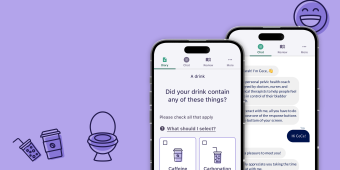The rise of technology in healthcare in the last two decades had all the heady promise of a gold rush. But right now, many healthcare systems are grappling with lower-than-expected returns on their technology investments.
What's more, many are also feeling the pinch of discontinued pandemic-era funding along with staffing shortages and widespread burnout. Many CFOs have drawn a line in the sand: no new technology investments that can’t deliver an ROI of at least 15 percent in year one.
That’s the bad news. The good news: most hospitals can derive that kind of value by rethinking the digital solutions they’ve already invested in. In this piece, I’ll outline, broadly, how hospital leaders can identify where that value lies and how to extract it.
Related: Product innovation during recession: new value without new investment
Focus on the technology you have today
It’s tempting, when you’re faced with disappointing ROI, to look for entirely new solutions. But in healthcare especially, following that impulse could end up being needlessly expensive.
Here’s why: it’s not that past investments in digital products and services can’t solve a healthcare system’s problems, it’s that those investments haven’t solved their problems yet. But there's still a good chance that they could.
Health systems that recognize this, dig in to figure out where existing solutions are underperforming, and identify ways to improve performance will find a much greater ROI than those that assume their current technology can’t work and look for net-new solutions.
But what does the process of optimizing current, but underperforming, technology look like? It starts with figuring out how people are (and, crucially, aren’t) using technology today. In many cases, hospitals are missing key value because the systems they invested in aren’t being used to their full potential.
Which brings us to the next phase in tapping into the value of your current digital products and services.
Think about all users
At the ViVE startup health conference I attended in March, one theme that came up over and over was the importance of user research in developing digital health solutions. But the more conversations I had, the more I realized there were limits in the ways many of us were thinking and talking about user research.
The biggest gap: startups and enterprise leaders alike were thinking in silos. They were thinking of users as either patients or clinicians.
The reality is that any digital health solution has multiple user groups: patients, providers (nurses, physicians, pharmacists, therapists), support staff, administrators, etc. You can build, for example, a portal that patients and physicians derive great value from, but if support staff aren’t trained in how to use it, you’ll lose out on all the administrative efficiencies it could be delivering.
One real-world example: for a recent doctor’s appointment, a patient got a notice via text to check in online. She logged into her portal, answered all the questions requested, and “checked in.” When she got to the doctor’s office, though, the receptionist asked her to check in and provide that same information all over again.
“I already did this online,” said the patient.
“Oh, that never works,” said the receptionist.
I wasn’t there for this interaction, but I’m willing to bet nobody was checking in with this receptionist about how the new high-tech portal was performing. I’m also willing to bet that the health system in question is seeing a much smaller ROI than it budgeted when it decided to adopt this particular technology.
The reality is that there are dozens of examples like this in every health system. And each one is an opportunity to figure out…
What's not working.
Why potential users aren’t using the technology as intended.
How to make changes to correct that and increase ROI without major additional spending.
Which brings me to the next step.
Optimize your existing technology
Let’s think about that broken check-in feature for a minute. Maybe the receptionist hasn’t been trained adequately; maybe the data is incompatible with existing systems; maybe it’s been implemented incorrectly. Maybe it’s something else entirely.
Regardless, once a user doesn’t trust the technology, they’ll default to whatever systems they used before it was introduced. And that means there's no way for the product to deliver the ROI it’s capable of.
In this case, for example, the patient (who now assumes the portal doesn’t work) will call into the clinic for everything. But the clinic has likely made staffing decisions that assume certain efficiency gains from the new portal. This means longer wait times for patients and heavier-than-anticipated workload for staff. That’s suboptimal for everyone, as well as being a waste of money.
That’s huge for health system leaders looking for new sources of value: these value sources exist within your current service model!
The keys to optimizing what you have:
Talk to all users of your current service model.
Identify pain points and areas where technology isn’t being used as expected.
Identify ways to improve those pain points.
In some cases, improvements will take the form of additional training or education. They might include better communications around use cases or (for health system employees) performance assessments that take into account use of the products and services.
In other cases, improvements might require some investment in additional technology – for example, maybe your call center staff needs a way to access more parts of the portal so they see the same information as patients, in the same way that patients see it.
All of these investments, though, will be smaller than assuming your current technology is unworkable and attempting to start from scratch.
Jumpstart your value mining with an innovation consultant
I mentioned that this piece would offer a high-level overview of extracting value from existing technology. Explaining this in an overview is one thing; making it happen is another. To actually extract new value from existing technology, you have to figure out which users to interview, what to ask them, and how to go from feedback to meaningful improvements.
If that’s a process your healthcare organization has never completed before, an innovation consultant can provide guidance. In fact, they can help you embrace more innovative mindsets and practices that drive ongoing value creation.
I’d love to talk with you about the latent value in your existing technology. If that’s something that resonates, please do get in touch.




